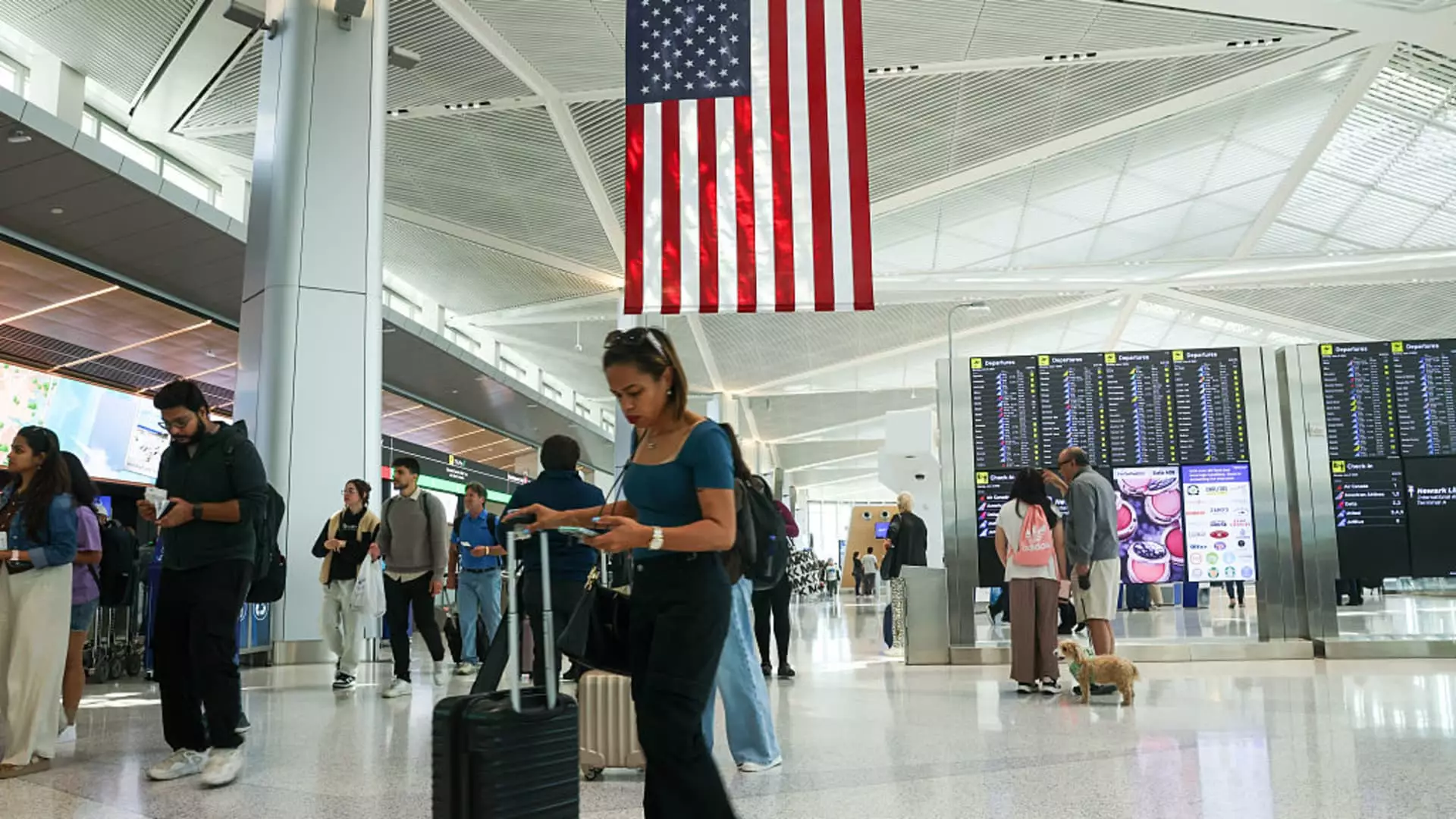For many, the summer holidays are a time of celebration, relaxation, and reunions. But beneath the festive veneer, the airline industry faces a profound crisis—one marked by overcapacity and sluggish demand. Despite the influx of millions of travelers over the July 4 weekend, the broader outlook remains grim. The industry eagerly projects temporary boosts driven by seasonal trends, yet the underlying fundamentals tell a different story. The welcome decline in fares — with domestic round-trips averaging a modest $265, the lowest since 2021 — is a stark reminder that airlines are discounting aggressively to fill seats. This superficial success masks a troubling reality: airlines are operating in an environment of economic uncertainty, where fears of recession, geopolitical tensions, and unpredictable demand loom large.
The supposed “summer sale” is more than just marketing fluff; it is a desperate bid to maintain revenue streams in an industry often driven by quarterly profits. Airlines like Southwest, Delta, American, and Alaska have already pulled or sharply revised their forecasts for 2025, signaling a loss of confidence in their ability to predict or control future demand. The air travel sector is caught in a vicious cycle: overcapacity leads to price wars, which erodes profit margins and discourages investment, all while the broader economic landscape remains riddled with uncertainties.
The Fragile Balance Between Capacity and Demand
One of the core issues plaguing airlines today is the delicate balancing act between supply and demand. Historically, airlines thrive on the second and third quarters, leveraging summer travelers to offset losses incurred during off-peak months. However, this cycle appears to be failing. Despite an expected 18.5 million travelers passing through U.S. airports between Tuesday and Monday, there’s no indication of a surge that will sustain airlines through the remainder of the year.
The data shows tepid demand: airline revenue in June has continued to decline, with air travel spending down nearly 12% year-over-year, according to Bank of America. Such figures highlight a consumer environment teetering on the edge of reluctance—people are making fewer trips, and those trips are costing less. This isn’t just a sign of a temporary lull but a potential structural shift, driven by high inflation, rising fuel costs, and the broader economic malaise. The once-hopeful rebound in international travel, which had been a bright spot for major carriers, is also faltering as fares drop to pre-pandemic levels, making it less lucrative for airlines that depend on those high-yield international routes.
The industry’s response has been strategic cutbacks—reducing unprofitable routes and flights, particularly during less busy weekdays. But these measures are, at best, palliative. They do not address the core issue: an oversupply of seats chasing a limited pool of willing travelers. The frequent cancellations, delays, and capacity reductions threaten to sour consumer confidence—ironically undermining the very recovery airlines are desperately trying to engineer.
The Economic and Political Impact of an Unsettled Aviation Sector
The ripple effects of these dynamics extend beyond the breakup of airline profit margins. Federal data suggests that, even with no outright recession yet, consumer spending on air travel continues to decline. This decline signals a deeper malaise, where uncertainty—fuel costs, geopolitical risks, and policy shifts—are dampening demand. For instance, tariffs and trade tensions from the Trump era cast a lingering shadow over the industry, and new political uncertainties threaten further turbulence.
The fragile stability of the industry reflects broader economic vulnerabilities. Airlines, despite their massive size and influence, are now at the mercy of global economic currents and political decisions. Their reliance on short-term demand boosts exposes their vulnerability; what was once a strategic growth sector is now a capricious and unpredictable market. The industry’s tendency to overexpand during boom times — and scramble to mitigate losses during downturns — exemplifies an outdated business model that prioritizes short-term gains over sustainable growth.
Moreover, the uneven recovery of international travel underscores the importance of geopolitical factors. Countries’ travel restrictions, visa policies, and diplomatic relations all influence demand. When these factors fluctuate, they send shockwaves through airlines’ revenue streams. The current scenario reveals the folly of over-reliance on international markets, which are far more sensitive to global politics and economic cyphers.
The airline industry teeters on the brink of a reckoning. It has been sold a false narrative of an imminent rebound bolstered by seasonal travel and record demand, yet the numbers tell a different story. Overcapacity, declining consumer spending, and geopolitical tailwinds threaten to prolong the industry’s malaise well beyond the summer months. Airlines must confront their flawed assumptions, scale back reckless expansion plans, and develop strategies rooted in realism rather than optimism. If they continue to chase fleeting demand with indiscriminate capacity, they will only deepen their structural vulnerabilities—ultimately sacrificing stability for short-lived profits. The question is whether they have the political will and strategic clarity to navigate the turbulence ahead.


Leave a Reply